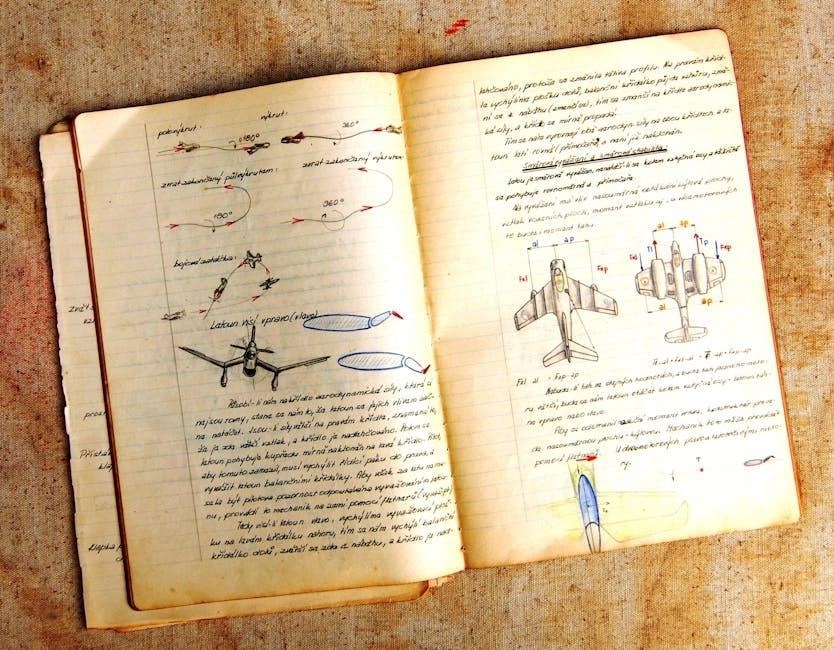
Manual transfer stretchers, like the ABS model, are essential medical devices designed to safely transport patients. They combine durability, adjustability, and ergonomic design for efficient patient handling, ensuring safety and comfort during transfers.
1.1 Definition and Purpose
A manual transfer stretcher, such as the ABS model, is a medical device designed for safely transporting patients. It is typically lightweight, durable, and features an adjustable design to accommodate various patient needs. The primary purpose of these stretchers is to facilitate seamless patient movement within healthcare settings, minimizing strain on medical staff while ensuring patient comfort and safety. Built with materials like ABS, these stretchers are easy to clean and maintain, making them essential for efficient and hygienic patient transport in hospitals, clinics, and emergency response situations.
1.2 Importance in Medical Settings
Manual transfer stretchers, such as the ABS model, play a vital role in medical settings by enabling efficient and safe patient transport. They are essential for emergency responses, routine transfers, and minimizing strain on healthcare staff. Their lightweight and adjustable designs allow for easy maneuverability, ensuring patient comfort and reducing the risk of injury to caregivers. Additionally, these stretchers are durable, easy to clean, and designed to meet the demands of high-traffic healthcare environments, making them indispensable for maintaining smooth workflows and patient safety in hospitals, clinics, and emergency services.

Key Features of the ABS Manual Transfer Stretcher
The ABS Manual Transfer Stretcher features a durable ABS platform, adjustable height settings, and ergonomic design for easy patient transport. It includes collapsible side rails and a central braking system for enhanced safety and control, ensuring smooth and secure patient movement in medical settings.
2.1 ABS Material and Durability
The ABS Manual Transfer Stretcher is constructed from high-quality ABS material, known for its exceptional durability and resistance to impact. This lightweight yet robust material ensures the stretcher can withstand heavy use in demanding medical environments while maintaining patient safety. The ABS platform is also easy to clean and disinfect, making it ideal for maintaining hygiene standards in healthcare settings. Its durability ensures long-term reliability, reducing the need for frequent replacements and lowering overall maintenance costs.
2.2 Adjustable Height and Ergonomic Design
The ABS Manual Transfer Stretcher features an adjustable height mechanism, allowing healthcare professionals to customize the stretcher to their needs, reducing strain during patient transfers. With a height range of 550–850mm, it accommodates various clinical settings and user preferences. The ergonomic design ensures smooth operation, with a central braking system and a fifth wheel for effortless height adjustments. This feature enhances patient safety and comfort, promoting efficient transfers while minimizing the risk of injury to both patients and staff. The lightweight yet sturdy construction further supports ease of use, making it a practical solution for healthcare facilities.
2.3 Safety Mechanisms and Brake Systems
The ABS Manual Transfer Stretcher is equipped with robust safety mechanisms, including a central braking system and swivel casters, ensuring stable and controlled movement. The intuitive foot-operated brake system allows staff to securely lock the stretcher in place, preventing accidental rolls. Additional features like anti-aging, rust-resistant materials and secure patient retention straps further enhance safety. These mechanisms are designed to protect both patients and healthcare workers during transfers, making the ABS stretcher a reliable choice for emergency and routine medical transport needs. Its advanced braking system ensures smooth, incident-free patient movement in demanding environments.

Design and Construction
The ABS Manual Transfer Stretcher features a lightweight, robust framework with collapsible ABS side rails. Its easy-to-clean surfaces ensure hygiene, making it durable for medical environments.
3.1 Lightweight and Robust Framework
The ABS Manual Transfer Stretcher boasts a lightweight yet robust framework, ensuring easy maneuverability without compromising on durability. Constructed from high-quality ABS material, it offers exceptional strength and resistance to wear and tear. This design allows medical staff to transport patients effortlessly, reducing physical strain. The framework is optimized for stability, ensuring smooth transitions and secure patient transport, even in fast-paced emergency settings. Its ergonomic build aligns with the needs of healthcare professionals, prioritizing both patient safety and staff efficiency.
3.2 Collapsible ABS Side Rails
The ABS Manual Transfer Stretcher features collapsible ABS side rails, designed for enhanced versatility and convenience. These rails are made from durable ABS material, ensuring long-lasting performance and ease of cleaning. The collapsible design allows for seamless patient transfer, enabling healthcare professionals to adjust the stretcher according to specific needs. This feature not only simplifies patient handling but also facilitates storage and transportation. The side rails provide additional stability, ensuring patient safety during movements. Their lightweight yet robust construction makes them ideal for use in fast-paced medical environments, where efficiency and reliability are paramount.
3.4 Easy-to-Clean Surfaces
The ABS Manual Transfer Stretcher is designed with easy-to-clean surfaces, ensuring optimal hygiene and infection control. The smooth, non-porous ABS material prevents bacteria growth and allows for quick disinfection. Cleaning is simplified, as the surfaces can withstand standard medical cleaning agents without damage. This feature is crucial in healthcare settings, where maintaining sterility is essential. The stretcher’s design minimizes crevices, reducing dust and debris accumulation. Regular cleaning ensures the stretcher remains in excellent condition, providing a safe and sanitary environment for patient transport. Its ease of maintenance makes it a practical choice for busy medical facilities.

Types of Manual Transfer Stretchers
Manual transfer stretchers include basic models, hydraulic-assisted versions, and two-function designs, each offering distinct features to suit various patient transport needs in healthcare settings.
4.1 Manual Stretchers
Manual stretchers are the most basic type, designed for straightforward patient transport. Constructed from durable materials like ABS, they offer lightweight and robust frameworks, ensuring easy maneuverability. These stretchers typically feature collapsible side rails for convenient storage and transport. They are ideal for emergency medical services and routine patient transfers within healthcare facilities. Manual stretchers are cost-effective and easy to maintain, with smooth surfaces that facilitate cleaning and disinfection. Their simplicity makes them a reliable choice for basic patient transport needs, providing essential support without advanced features, yet remaining indispensable in clinical settings for immediate care situations.
4.2 Hydraulic-Assisted Stretchers
Hydraulic-assisted stretchers offer enhanced functionality compared to manual models, featuring foot-controlled hydraulic systems for effortless height adjustment. These stretchers are designed with dual hydraulic pumps, allowing smooth elevation and lowering of the patient platform. They often include ergonomic handles, central braking systems, and collapsible ABS side rails for added convenience. With a maximum load capacity of 150 kg, they ensure safe patient transport. Additionally, features like IV poles and CPR handles make them versatile for emergency and routine medical procedures. Their durability, combined with easy-to-clean surfaces, makes them a practical choice for busy healthcare environments.
4.3 Two-Function Transfer Stretchers
The two-function transfer stretcher combines manual and hydraulic capabilities, offering versatility in patient transport. It features a fifth guide wheel for easy height adjustment and a gas spring for smooth backrest movement. Designed with collapsible ABS side rails and an ABS platform, it ensures easy cleaning and disinfection. This stretcher includes accessories like an IV pole and oxygen holder, enhancing its functionality. With a focus on ergonomic design, it reduces strain on healthcare workers while ensuring patient safety and comfort during transfers. Its robust construction and practical features make it ideal for both emergency and routine medical settings.

Applications and Use Cases
Manual transfer stretchers are widely used in emergency medical services, hospital wards, clinics, and rehabilitation centers. They are essential for quick patient transport in emergencies and routine care.
5.1 Emergency Medical Services
Manual ABS transfer stretchers are indispensable in emergency medical services, enabling rapid and secure patient transport. Their lightweight, durable ABS construction and collapsible side rails allow easy maneuverability in tight spaces. These stretchers are equipped with height-adjustable features and reliable brake systems, ensuring patient stability during emergencies. The ergonomic design reduces strain on EMTs, while the easy-to-clean surfaces maintain hygiene standards. They are ideal for urgent situations, providing a safe and efficient way to move patients, making them a critical tool in emergency response and care;
5.2 Hospital Wards and Clinics

Manual ABS transfer stretchers are widely used in hospital wards and clinics for patient transport between rooms, departments, or procedures. Their lightweight, durable ABS construction ensures easy maneuverability, even in tight spaces. Adjustable height settings and collapsible side rails facilitate smooth transitions, while the ergonomic design reduces strain on healthcare staff. The easy-to-clean surfaces of these stretchers support infection control practices, making them ideal for daily use in busy hospital environments. They provide a reliable, efficient, and safe solution for patient movement, enhancing both patient comfort and staff workflow.

5.3 Rehabilitation Centers
Manual ABS transfer stretchers are invaluable in rehabilitation centers, where patient mobility and safety are paramount. Their adjustable height and ergonomic design allow therapists to position patients optimally during sessions. Lightweight and durable, these stretchers facilitate smooth transfers between therapy areas, reducing strain on staff. The easy-to-clean ABS surfaces support hygiene, crucial for infection control. Additionally, features like secure patient straps and stable braking systems ensure patient safety during movement. These stretchers are essential for aiding recovery, providing a reliable and efficient solution for transporting patients with varying mobility needs in rehabilitation settings.

Safety and Compliance Standards
ABS manual transfer stretchers meet rigorous safety standards, ensuring patient security with features like maximum load capacity, CE and ISO certification, and reliable braking systems.
6.1 Maximum Load Capacity
The ABS manual transfer stretcher is designed with a maximum load capacity of 150 kg (330.69 lb), ensuring safe transportation for a wide range of patients. This capacity is carefully tested to maintain stability and prevent accidents during transfers. The robust construction of the stretcher, combined with its durable ABS material, supports this weight without compromising maneuverability. This feature makes it suitable for various medical settings, providing reliability and strength when moving patients efficiently and safely.
6.2 CE and ISO Certification
The ABS manual transfer stretcher meets rigorous CE and ISO certification standards, ensuring compliance with international safety and quality requirements. These certifications guarantee that the stretcher is designed to provide reliable performance, durability, and patient security. The product undergoes strict testing to meet these standards, offering healthcare professionals confidence in its safety and effectiveness. Compliance with CE and ISO certifications also highlights the stretcher’s adherence to global medical device regulations, making it a trusted choice for hospitals and clinics worldwide.
6.3 Patient Security Features
The ABS manual transfer stretcher incorporates multiple patient security features, including collapsible ABS side rails and a central braking system. These elements ensure patient stability and prevent accidental movement during transport. The sturdy ABS platform provides a secure surface, while the ergonomic handle and steering mechanism allow for precise control. Additional features such as IV pole attachments and a fifth guide wheel enhance safety and convenience. These features collectively minimize risks and ensure a safe transfer process, prioritizing patient well-being and caregiver confidence. The design emphasizes both patient and staff safety, making it a reliable choice in clinical settings.

Maintenance and Cleaning
Regular maintenance ensures the ABS manual transfer stretcher remains functional. Clean surfaces with disinfectants, lubricate wheels, and inspect brakes. Easy-to-clean ABS material simplifies sanitization, maintaining hygiene standards.
7.1 Regular Maintenance Tips
Regular maintenance ensures the ABS manual transfer stretcher functions optimally. Clean the ABS surfaces with approved disinfectants to maintain hygiene. Lubricate the wheels and casters periodically to ensure smooth movement. Inspect the brake systems and adjust them as needed to guarantee reliable operation. Check the collapsible side rails for proper alignment and functionality. Wipe down the ergonomic handle and steer wheel to prevent wear. Regularly inspect the IV pole and other accessories for damage. Address any issues promptly to prevent breakdowns and extend the product’s lifespan. Proper care ensures patient safety and equipment reliability over time.
7.2 Disinfection and Sanitization
Disinfection and sanitization are critical for maintaining a hygienic environment. Use hospital-grade disinfectants on the ABS platform, side rails, and all surfaces. Allow the solution to dwell for the recommended time before wiping dry. Regularly sanitize the collapsible rails and handles to prevent bacterial growth. Avoid harsh chemicals that could damage the ABS material. Disinfect after each use and at the end of the day. Always follow manufacturer guidelines to ensure effective sanitization without compromising the equipment. Proper cleaning protocols help prevent infections and ensure patient safety during transfers.

Cost Considerations
ABS manual transfer stretchers are competitively priced, offering a two-year warranty. Their durable construction ensures long-term savings, providing excellent value for healthcare facilities and professionals.
8.1 Price Range and Warranty
The ABS manual transfer stretcher is priced competitively, typically ranging between $500 and $1,200, depending on features and brand. It comes with a standard two-year warranty, ensuring durability and reliability. This cost-effective solution offers long-term benefits, as its robust ABS construction minimizes maintenance needs. The warranty covers manufacturing defects, providing peace of mind for healthcare facilities. With its combination of affordability and quality, the ABS manual transfer stretcher is a practical investment for efficient patient care.
8.2 Long-Term Benefits
Investing in an ABS manual transfer stretcher offers significant long-term benefits, including reduced maintenance costs due to its durable ABS construction. The easy-to-clean surfaces minimize downtime for disinfection, ensuring continuous use. Its ergonomic design reduces staff fatigue and injury risks, lowering workplace incident rates. Additionally, the stretcher’s reliability and longevity provide consistent performance over years, making it a cost-effective solution. The included warranty further enhances value, covering defects and ensuring peace of mind. Overall, the ABS manual transfer stretcher is a practical, long-lasting asset for healthcare facilities, improving efficiency and patient care quality while minimizing operational costs.
Manual ABS transfer stretchers are durable, efficient, and safe tools for patient transport. Their ergonomic design and easy maintenance make them indispensable in modern healthcare settings.
9.1 Final Thoughts
Manual ABS transfer stretchers are indispensable in healthcare, offering efficiency, safety, and durability. Their ergonomic design ensures smooth patient transport, reducing strain on staff. With features like adjustable height and collapsible side rails, these stretchers adapt to various settings, from emergencies to rehabilitation. Long-term benefits include reduced maintenance costs and compliance with safety standards. Investing in a high-quality ABS stretcher balances affordability with reliability, making it a wise choice for healthcare facilities aiming to enhance patient care and operational efficiency.
9.2 Future Trends in Patient Transfer Technology
The future of manual transfer stretchers, like the ABS model, lies in advanced materials and smart designs. Innovations such as motorized height adjustment and AI-driven load balancing may emerge, enhancing safety and efficiency. Hydraulic systems could become more intuitive, reducing manual effort. Additionally, eco-friendly materials and modular designs may gain traction, allowing customization for specific healthcare needs. These advancements aim to optimize patient comfort, streamline workflows, and integrate seamlessly with modern medical technologies, ensuring safer and more efficient patient transfers in the years to come.